Find overlap
The Find overlap step finds matching or non-matching rows between two tables.
Input/output
This step takes two tables as its input and shows you how they overlap. It will help you answer a question like, "Which rows from Table 1 do or do not exist in Table 2?"
Input 1
Table 1 shows products in our first store with three columns: 'Variant ID', 'Name', and 'Sales Price'.
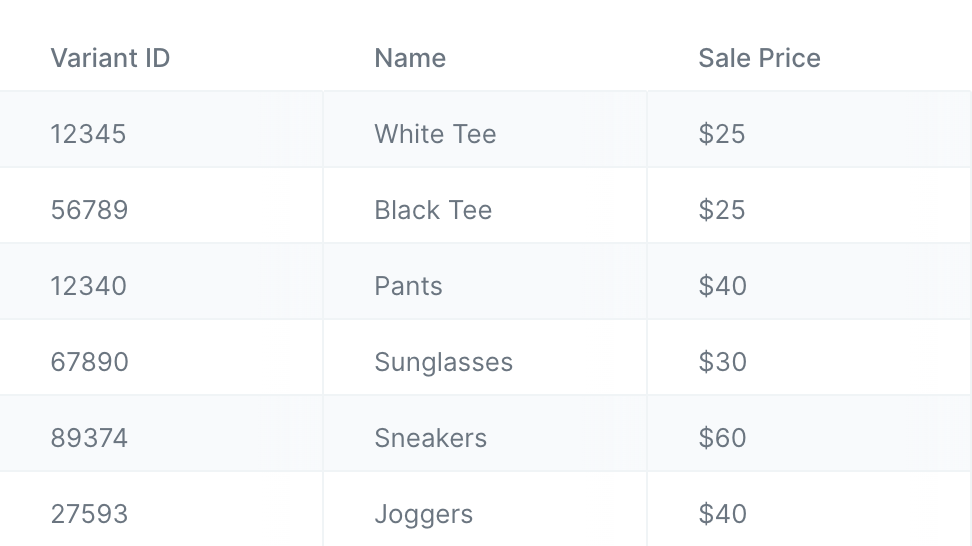
Input 2
Table 2 shows products in our second store with two columns: 'Variant ID' and 'Name'.
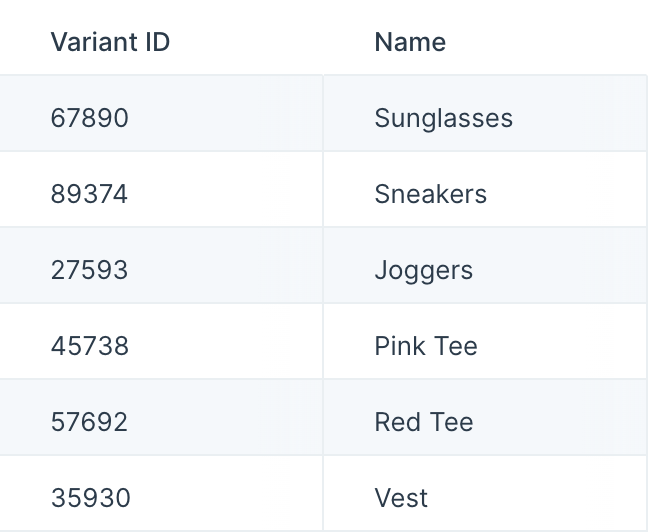
Output
Let's say we want to find which products from Store 1 are also sold in Store 2. The step will immediately tell us this as its output. Below we can see that there are three products sold in both stores. Since 'Store 1' was our primary table in the step, it's showing us the complete rows from that table.

Default settings
When you first connect your two inputs into this step, you'll see that your first input is treated as the primary table, and that rows have been matched by the lead column. By default, the step will keep rows where any of the rules are true.
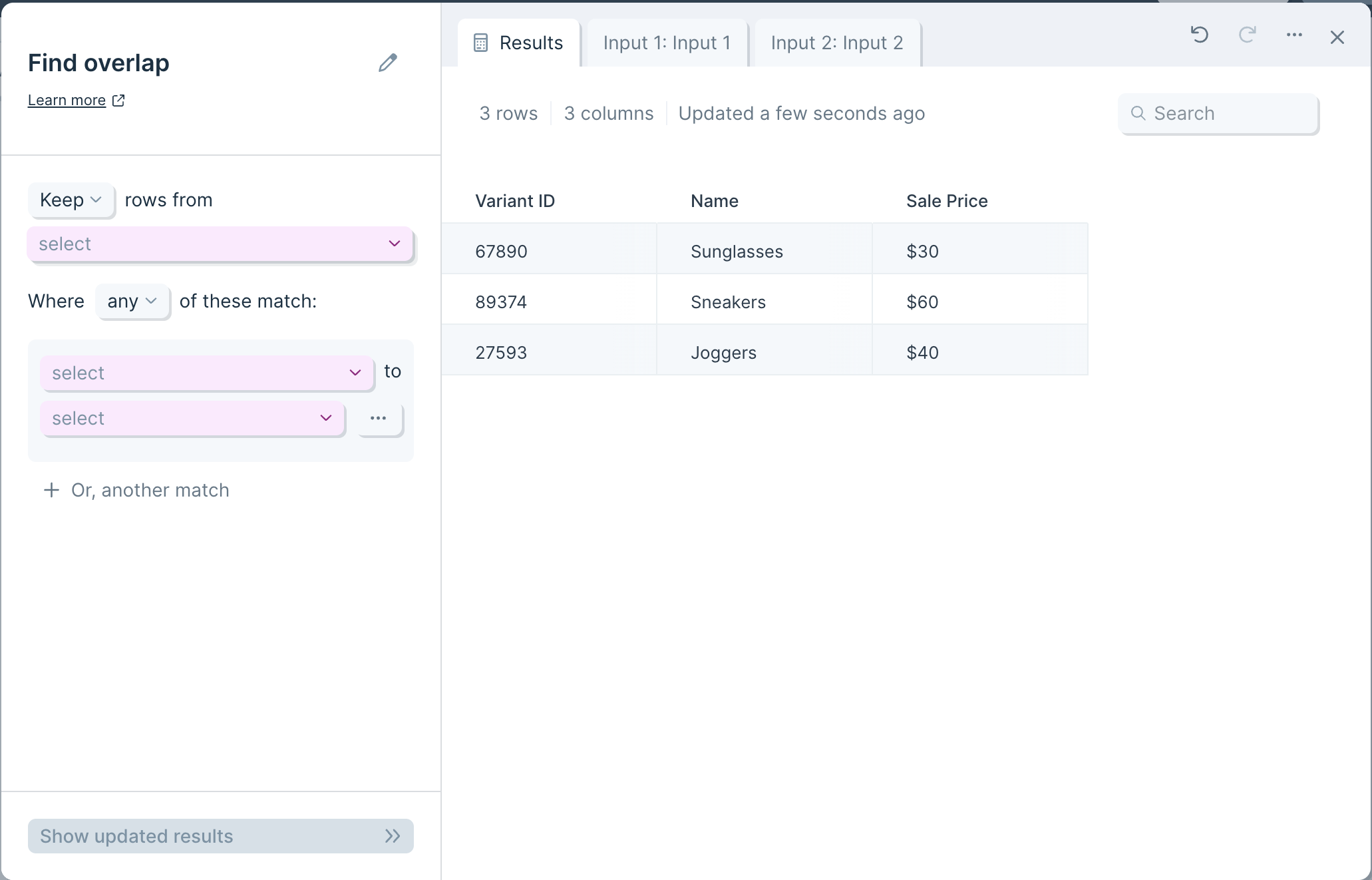
Custom settings
First, make sure the step is configured to use the correct primary table, in this case, 'Input 1'. Then, determine how the rules should be honored. If you are setting multiple rules, the step can be structured so that 'any' rule counts as a match or 'all' rules must be met to be considered a match.
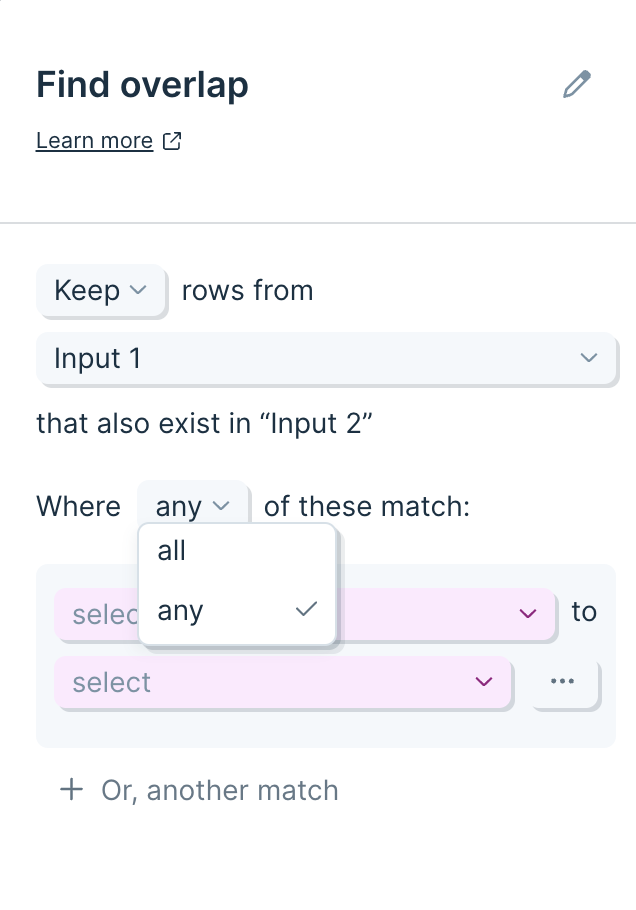
Now we're ready to configure the rules for how the step should identify matches. Each rule compares tables according to values in specified columns. First, select the relevant column from each table. Then, choose one of three options in the match type:

'Exact match' will look for an exact match, including casing. 'Match ignoring case' will allow for differences in capitalization. 'Approximate match' will look for a fuzzy match.
If you choose 'Approximate match', you can adjust the confidence percentage. The higher the percentage, the closer to an exact match this step will attempt to make. For comparison, 100% confidence is equivalent to searching for an exact match.
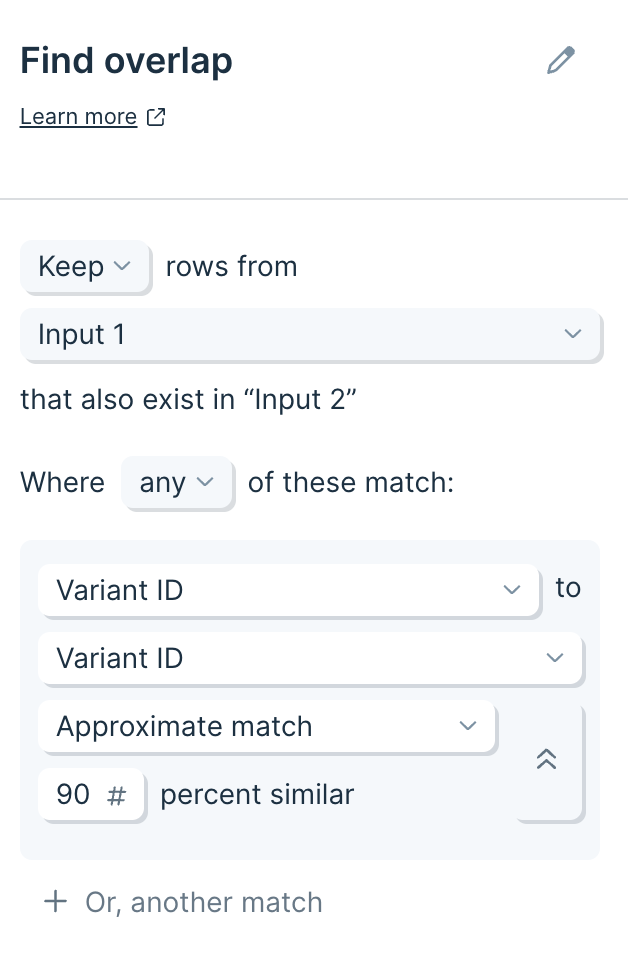
To add another rule, click '+ Or, another match' below your first rule.